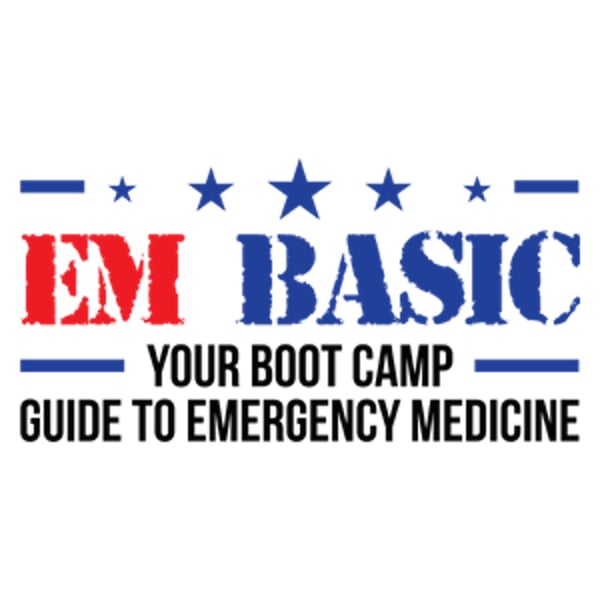89 Neonatal fever
EM Basic
EM Basic LLC
4.6 • 665 Ratings
🗓️ 24 February 2020
⏱️ 29 minutes
🧾️ Download transcript
Summary
Join Zac Hodges and Dan McCollum as they have a conversation about neonatal fevers with Dr. Kathryn McLeod, an experienced pediatrician at the Children's Hospital of Georgia. We discuss the general approach to taking the history and physical exam of a patient with a fever under the age of 90 days. Where did prior guidelines on the initial workup come from? How did immunizations change the risk of serious bacterial infection? What are some recent new approaches to the febrile neonate? Join us as we discuss this and more!
Transcript
Click on a timestamp to play from that location
| 0:00.0 | Hi, everyone, and welcome back to another episode of E.M. Basic. We've got here today with us, |
| 0:04.8 | Zach Hodges, as well as Dr. Catherine McLeod, a pediatric hospitalist. |
| 0:09.2 | Hi, everyone. My name is Zach Hodges. I'm a pediatric resident at the Medical College of Georgia |
| 0:13.5 | at Augusta University, and I will be your host. Today we'll be discussing the management |
| 0:17.7 | of the well-appearing febrile infant less than 60 days old. |
| 0:21.2 | I want to emphasize well-appearing. |
| 0:22.8 | We'll save the discussion of the critically ill neonate for another time. |
| 0:26.4 | Dr. McLeod, will you get it started by giving us some background information and tell us why this topic is so important? |
| 0:31.7 | Yes, well, obviously, fever and young infants is common and seen daily in most pediatric emergency departments. |
| 0:39.2 | In these young infants, fever often is the only sign of infection. Even febri infants can be |
| 0:44.9 | well appearing, but remain at high risk of bacterial infections. Unfortunately, since most of these |
| 0:51.4 | infants will have a normal physical exam, the exam is often unhelpful to |
| 0:55.9 | differentiate infants with a self-limited viral illness from those who are presenting with early |
| 1:01.3 | signs of potentially significant bacterial infection. Currently, there are no consensus guidelines |
| 1:08.1 | regarding the optimal management of these patients, but there are some new tools |
| 1:12.7 | like the step-by-step approach and the P-Carn rule for febrile infants that we will discuss later |
| 1:18.2 | that can help distinguish which well-appearing infants may be at lower risk for bacterial infection. |
| 1:24.3 | Hopefully, by the end of this discussion, we will all know more about which infants require |
| 1:29.0 | a full evaluation and paracantibiotics and emission versus those that may be safe for limited |
| 1:34.9 | evaluation and outpatient management. Let's work through a clinical case to get us started. |
| 1:40.4 | Our patient is a six-week-old female infant brought to the emergency department with a history of fever at home. |
| 1:46.3 | Her mother reports no other symptoms, including rhinorrhea, cough, vomiting, diarrhea, or rash. |
... |
Please login to see the full transcript.
Disclaimer: The podcast and artwork embedded on this page are from EM Basic LLC, and are the property of its owner and not affiliated with or endorsed by Tapesearch.
Generated transcripts are the property of EM Basic LLC and are distributed freely under the Fair Use doctrine. Transcripts generated by Tapesearch are not guaranteed to be accurate.
Copyright © Tapesearch 2025.

